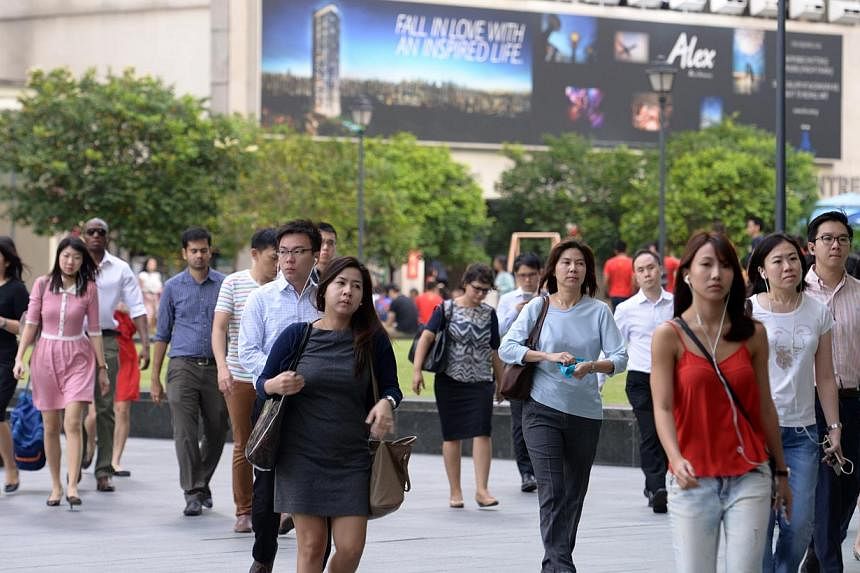Equality is represented twice on the Singapore flag. First, in the colour red, symbolising the equality and universal brotherhood of man. The second, as one of the five stars standing for ideals that also include democracy, peace, progress and justice. Though the definition of equality is complex, it encompasses gender equality - the equal rights of both men and women.
The transformation of Singapore in the last 50 years has occurred on two distinct and equally important planks - physical landscape and people. Without the transformation of Singapore's people - both men and women - entering the workforce, the physical landscape would not have been so remarkably transformed.
So the equality of Singaporean women - their equal access to education, jobs, equal pay, health care and protection from violence - was, and continues to be, vital to Singapore's economic progress.
According to Singapore's labour force statistics last year, the employment rate for women is at one of its highest levels - 76 per cent for the prime working ages of 25 to 54.
Many who grew up in the 1960s and 1970s can still recall how most mothers stayed at home, but occasionally worked by helping to look after the family shop for no pay.
Today, the Singapore woman is often viewed as a finished product equal to her male counterpart. Women doctors, lawyers, bankers, entrepreneurs, office workers and legislators abound.
The Singapore woman is cosmopolitan, her destiny shaped not just by local culture but influenced also by an ever permeating global culture, augmented by Singapore's open economy.
And yet, there still exist gender gaps.
First, some women are still not equally paid as their male counterparts for the same job. In the 2014 Labour Force Statistics, women earn less than men in all occupational categories except clerical and support. In most categories, this differential is more than 10 per cent.
Second, although a roughly equal number of women enter tertiary institutions as men, there is a fall-off of employed women in their 30s because of child-rearing and caregiving.
Could a mindset shift of men taking on more household duties help?
For Asian households, this could be a difficult ask. But this is no ground-breaking idea. Some 25 years ago, then prime minister Lee Kuan Yew said: "It is not possible to have a man continue to treat his marriage as if a wife's role is the same as that in his mother's generation... Wives cannot alone carry the burdens of managing the home and bringing up the children."
Even as more Singaporean women become wage earners, and breadwinners in some cases, our Asian values-based society has to evolve and become more accepting of modern life choices - that men can stay at home and be the primary caregivers of families.
Third, women are still under-represented at senior management levels.
To some extent this is due to point two, which results in the dwindling of the available pool of female candidates for higher positions. Companies and bosses must, therefore, be open-minded, consultative and creative in considering alternative work plans specifically targeted at female work-life balance.
At the highest corporate level - board seats - progress has been dismal. The topic of gender quotas continues to be divisive. Most women still prefer to be elevated for merit-based reasons. However, the lack of progress bears re-evaluating this organic strategy.
According to BoardAgender, in Singapore in 2013, only 8.3 per cent of SGX-listed companies have women on their boards. We are still behind our regional peers and at about half the percentages of the European Union, United States and Australia.
Fourth, gender equality should also extend to women who come to work here. The at-times awkward and unspoken truth is that for many working women, having a maid is imperative in allowing them to go to work and earn a living. Domestic helpers should be duly recognised, not just within the family - such as through better working and sleeping conditions - but by society, with stronger legal rights in the case of exploitation for overwork, unpaid wages or physical and mental abuse.
Fifth, according to Central Provident Fund statistics, older Singapore women do not accumulate as much in CPF savings as older men. In 2013, the median CPF savings for women aged 51 to 54 was about $90,000, and for males, $130,000.
Bear in mind also that almost a quarter of women would have left the labour force in their prime working age primarily for caregiving reasons, further affecting CPF savings.
Anecdotally, many women have less control over their own or their family's finances than men.
With Singapore women living longer than men, financial education over a woman's lifespan, particularly in her golden years, will become more crucial.
As we celebrate International Women's Day and as Singapore turns 50, my hope is that women here will continue to fight for their equality and will not be afraid to ask and confront tough gender questions and environments. For only with gender equality, will the other Singapore ideals - democracy, peace, progress and justice - be fully realised.
The writer is president of the Singapore Committee for UN Women and past president of the Financial Women's Association.

